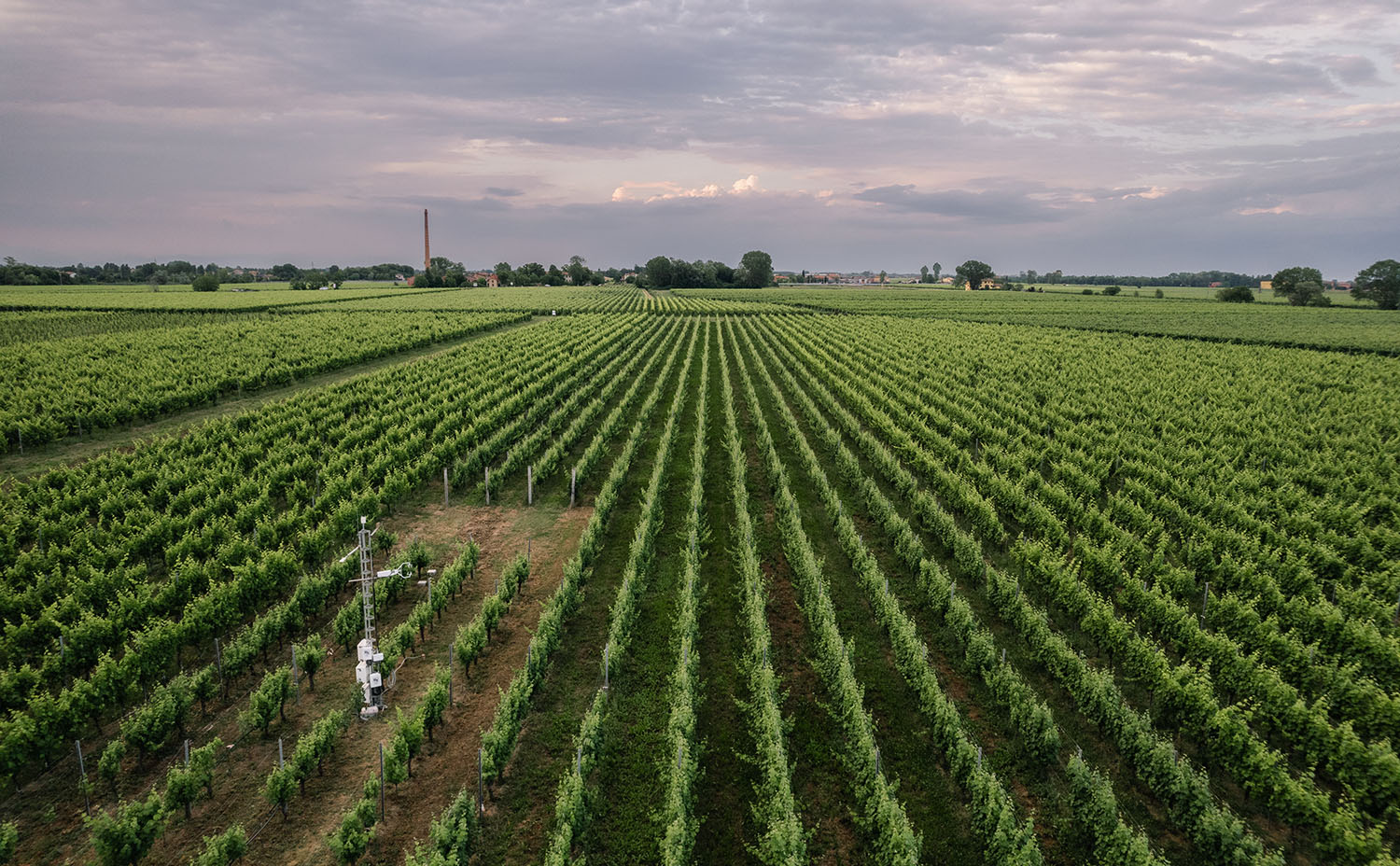
In the heart of the Italian Veneto region, where rolling hills are covered by emerald vineyards, lies a unique research station. Nestled within the Bosco del Merlo, a 33-hectare estate dedicated to Sauvignon Blanc and Glera grapes, the ICOS Lison station is quietly revolutionising our understanding of agriculture's role in climate change.
"We're not just growing grapes here," explains Lucia Paladin, owner of Bosco del Merlo. "We're contributing to a global effort to understand climate change." Her vineyard produces the world-renowned Prosecco, but also serves as a living laboratory.

Dr. Franco Meggio, the Lison Station Manager and Associate Professor at the University of Padua, unveils the science behind the scenes. "By constantly measuring CO2, water vapor exchange and wind speed, we're tracking the vineyard's carbon footprint in real-time using the eddy covariance technique. During the season, we collect samples that we analyze in the lab to quantify the carbon, carbohydrate and even chlorophyll content," he explains.
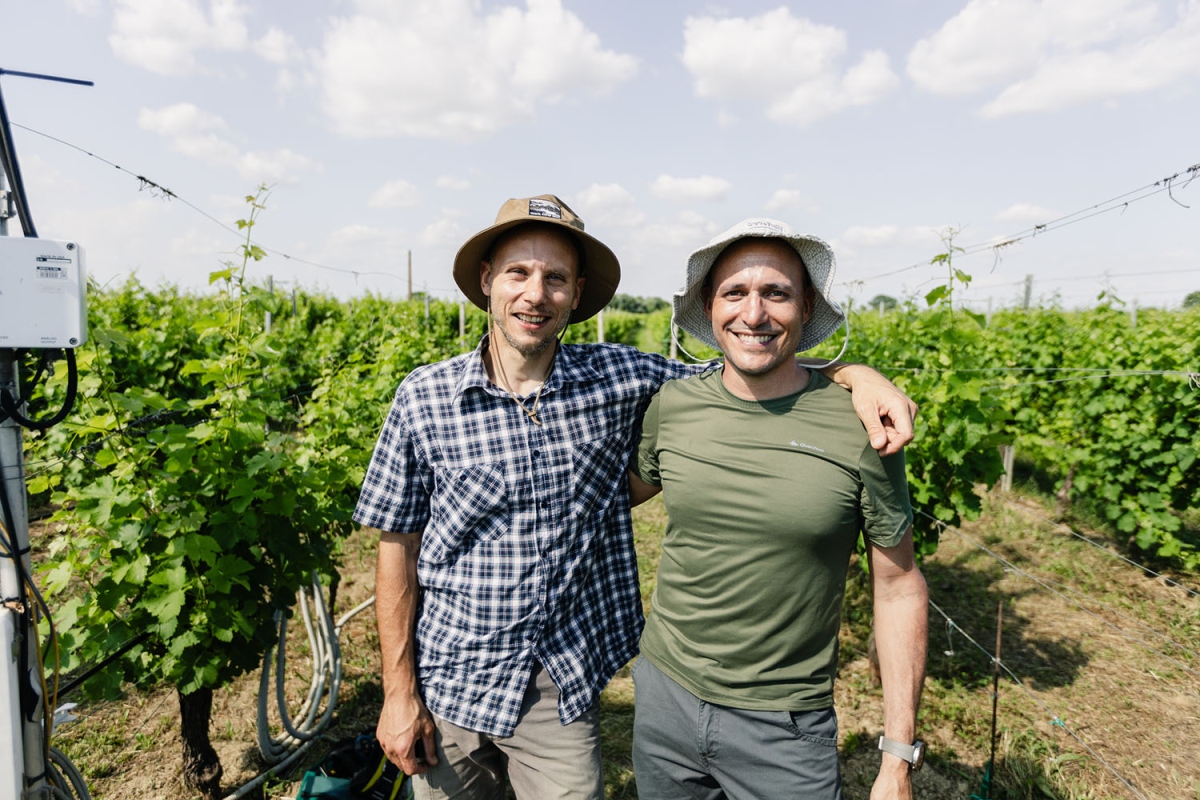
The data from the station is showing how extreme weather events, such as heatwaves and droughts, impact the plants and the soil.
Vineyards capturing carbon
The data collected at Lison is more than just numbers. It's a window into the future. Dr. Andrea Pitacco, Professor in Viticulture at the University of Padua, emphasizes the vineyard's potential as a carbon sink. Unlike traditional crops, which often lose carbon through tillage, vineyards maintain a protective grass cover:
“In vineyards, the grass floor is keeping the carbon in place. This means that you can really have a signifcant accumulation of carbon in the soil, which is compensating for the CO2 released during management,” Pitacco explains.

Dr. Franco Meggio adds to the discussion: “For years and years it have been said, that agriculture is a source, it is a source. But with our measurements, I believe as first in Italy and even at a world level, we provide data showing that vineyards can be a sink.”
The Lison station is truly unique because it has the longest series in the world of greenhouse gas measurements.
“Today, we can say that a vineyard is a slight but a significant sink for carbon. It is not as strong as a forest sink, obviously, but if you balance the carbon sink activity of the vegetation with the sources of CO2 that you obviously use for cultivation and managing, then this vegetation type is carbon neutral. This is a very important conclusion of our work, “says Pitacco.
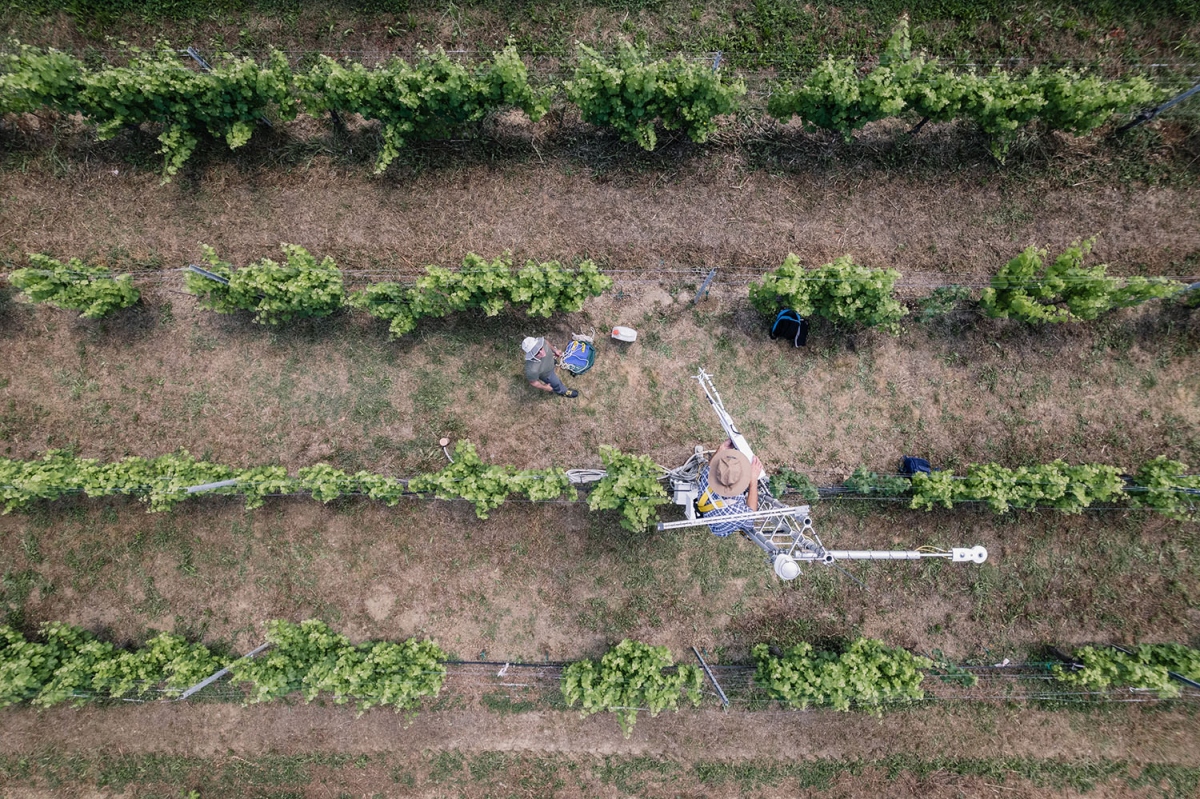
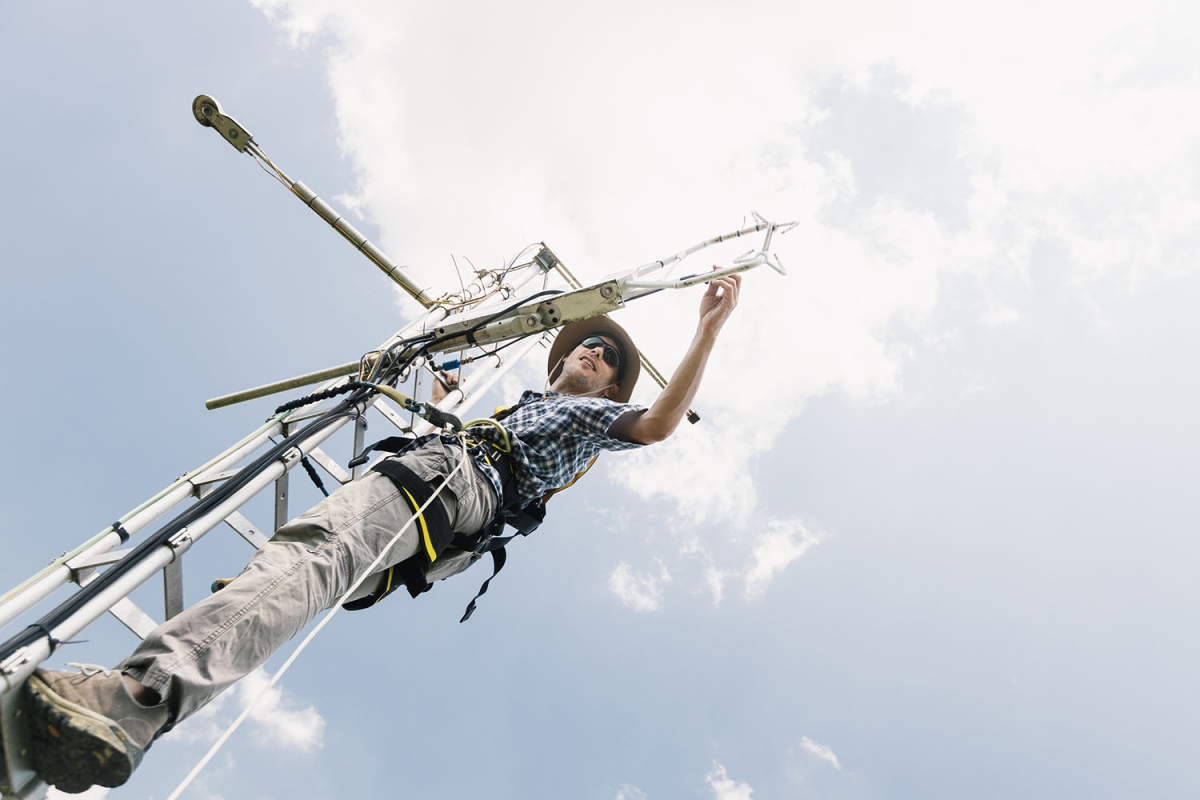
However, as soon as you plant a new vineyard, it cannot be a big sink. But in 2-3 years, the vines are mature and the vineyard has already turned into a small carbon sink.
“I think that agriculture should have more relevance in the big game of controlling carbon budgets. Farmers should become aware of their responsibility and politicians should account for their work and activity,” Pitacco adds.
In Italy, there is roughly 700,000 hectares of vineyard. Some are in the northern Italy, some are in Tuscany, some in Puglia or Sicily.
“Not everywhere we can expect the same sink capacity, but in the northern and central Italy, where you have enough water to grow the grass floor - I believe that all these vineyards can be a little sink for carbon,” Pitacco says.
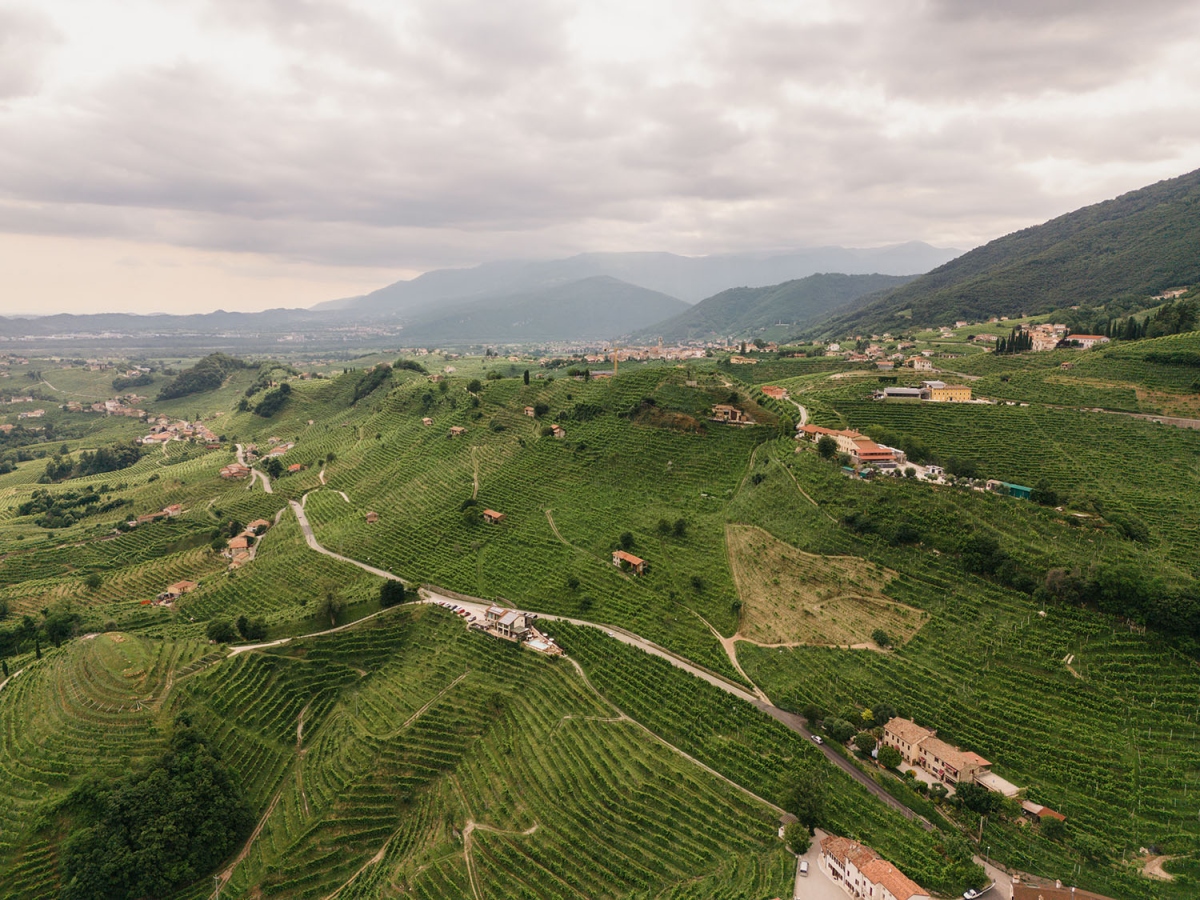
Detecting how plants react to climate change
Beyond the scientific implications, the station is proving invaluable to local farmers. "We can predict rainfall patterns and adjust our practices accordingly," says vineyard owner Paladin. “We need measurements, to see how plants react in different climate scenarios and to discover changes in the climate. It's absolutely a very good thing to have the station here - my colleagues often ask me to get information.”

As the world grapples with climate change, the Lison station offers a glimmer of hope. It demonstrates that even seemingly small-scale operations like vineyards can contribute significantly to mitigating climate impacts. And as Paladin wisely notes:
"Everyone should contribute a bit to research in order to understand the changing climate. The more data we can obtain - the better it is for everyone.”
The interest around carbon economy and the carbon market is constantly growing – also on a policymaker level.The research team, led by Pitacco, would like to extend their measurements to real situations on a regional or national viticulture level. “This is really the tricky part of the game. Using fundamental solid measurements in few points to be able to design policies for the whole sector,” says Pitacco.
Text: Charlotta Henry
Photos: Pekka Pelkonen
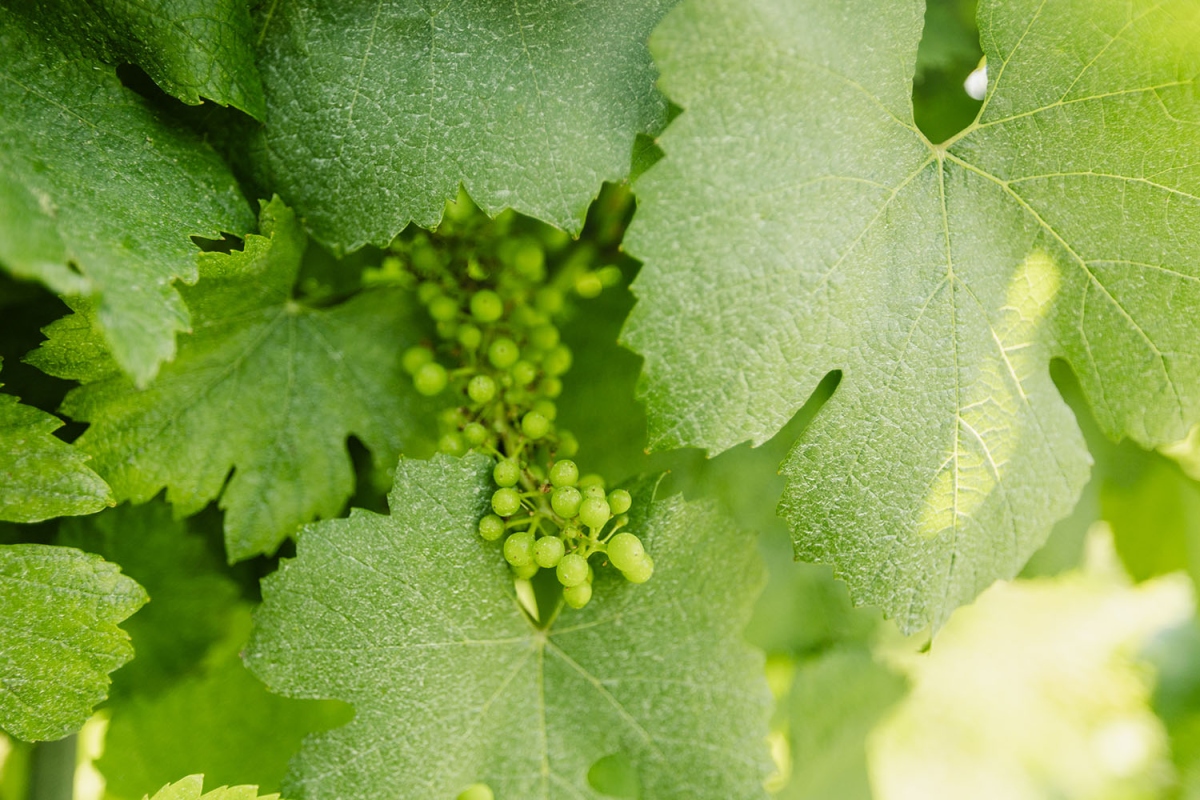
The Lison site recently received partial support by the Italian Research Center for Technology in Agriculture.
